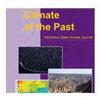Late Aptian paleoclimate reconstruction of the Brazilian equatorial margin: inferences from palynology
IF 3.8
2区 地球科学
Q1 GEOSCIENCES, MULTIDISCIPLINARY
引用次数: 1
Abstract
Abstract. This study conducted high-resolution paleoclimatic analyses based on the identification of palynological groups of late Aptian age (biozone Sergipea veriverrucata) in the Bragança and Codó formations within the Bragança–Viseu, São Luís, and Parnaíba basins. The analysis comprised 40 palynological samples, with 200 palynomorphs per slide counted when possible. Bioclimatic analysis was mainly supported by the identification of botanical affinities, and ecological and climatic parameters such as the wet/arid trend (Fs/X), Shannon–Wiener diversity, and indicator species analysis (IndVal) were used. Statistical analyses such as principal component and cluster analyses were employed to support the paleoclimatic interpretations. The study recognized 69 genera distributed among the main groups of living plants, including bryophytes, ferns, lycophytes, gymnosperms, and angiosperms. It was possible to attribute botanical affinity in 94.2 % of the taxa, and nine genera occurred in all sections studied: Afropollis, Araucariacites, Callialasporites, Cicatricosisporites, Classopollis, Cyathidites, Deltoidospora, Equisetosporites, and Verrucosisporites, with Classopollis being the most abundant. The stratigraphic distribution of the bioclimatic groups (hydrophytes, hygrophytes, lowland tropical flora, upland flora, and xerophytes) allowed for the identification of climatic phases: pre-evaporitic, evaporitic, and post-evaporitic. In the pre-evaporitic phase, the most significant abundances were between the hygrophytes and upland flora, indicating a certain level of humidity. Xerophytes were the most abundant in all phases, with a conspicuous increase in the evaporitic phase, reflecting an increase in aridity. In the post-evaporitic phase, there was a significant increase in the upland flora with the return of wetter conditions. This study confirmed an increasing humidity trend in the analyzed sections, probably owing to the influence of the Intertropical Convergence Zone that was already operating during the late Aptian.巴西赤道边缘晚阿普第世古气候重建:从孢粉学推断
摘要本研究基于对bragana - viseu、s o Luís和Parnaíba盆地内的bragana和Codó地层中晚阿普tian时代孢粉群(biozone onesergipea ververrucata)的鉴定,进行了高分辨率的古气候分析。分析包括40个孢粉样本,每张幻灯片尽可能计数200个孢粉。生物气候分析主要以植物亲缘性鉴定为支撑,利用干湿趋势(Fs/X)、Shannon-Wiener多样性和指示物种分析(IndVal)等生态气候参数。采用主成分分析和聚类分析等统计分析方法支持古气候解释。该研究鉴定出分布在现存植物主要类群中的69个属,包括苔藓植物、蕨类植物、石松植物、裸子植物和被子植物。94.2%的分类群具有植物亲和性,在所有剖面中均有9个属:Afropollis、Araucariacites、Callialasporites、Cicatricosisporites、Classopollis、Cyathidites、Deltoidospora、Equisetosporites和Verrucosisporites,其中Classopollis数量最多。生物气候类群(水生植物、水生植物、低地热带植物、高地植物和旱生植物)的地层分布允许识别气候阶段:前蒸发期、蒸发期和后蒸发期。在前蒸发期,丰度最显著的是湿生植物和陆生植物之间,表明有一定的湿度水平。旱生植物在各个阶段都是最丰富的,在蒸发期明显增加,反映了干旱程度的增加。在后蒸发期,随着湿润条件的恢复,旱地植物区系显著增加。该研究证实了所分析剖面的湿度增加趋势,这可能是由于在Aptian晚期已经开始运行的热带辐合带的影响。
本文章由计算机程序翻译,如有差异,请以英文原文为准。
求助全文
约1分钟内获得全文
求助全文
来源期刊

Climate of The Past
地学-气象与大气科学
CiteScore
7.40
自引率
14.00%
发文量
120
审稿时长
4-8 weeks
期刊介绍:
Climate of the Past (CP) is a not-for-profit international scientific journal dedicated to the publication and discussion of research articles, short communications, and review papers on the climate history of the Earth. CP covers all temporal scales of climate change and variability, from geological time through to multidecadal studies of the last century. Studies focusing mainly on present and future climate are not within scope.
The main subject areas are the following:
reconstructions of past climate based on instrumental and historical data as well as proxy data from marine and terrestrial (including ice) archives;
development and validation of new proxies, improvements of the precision and accuracy of proxy data;
theoretical and empirical studies of processes in and feedback mechanisms between all climate system components in relation to past climate change on all space scales and timescales;
simulation of past climate and model-based interpretation of palaeoclimate data for a better understanding of present and future climate variability and climate change.
 求助内容:
求助内容: 应助结果提醒方式:
应助结果提醒方式:


